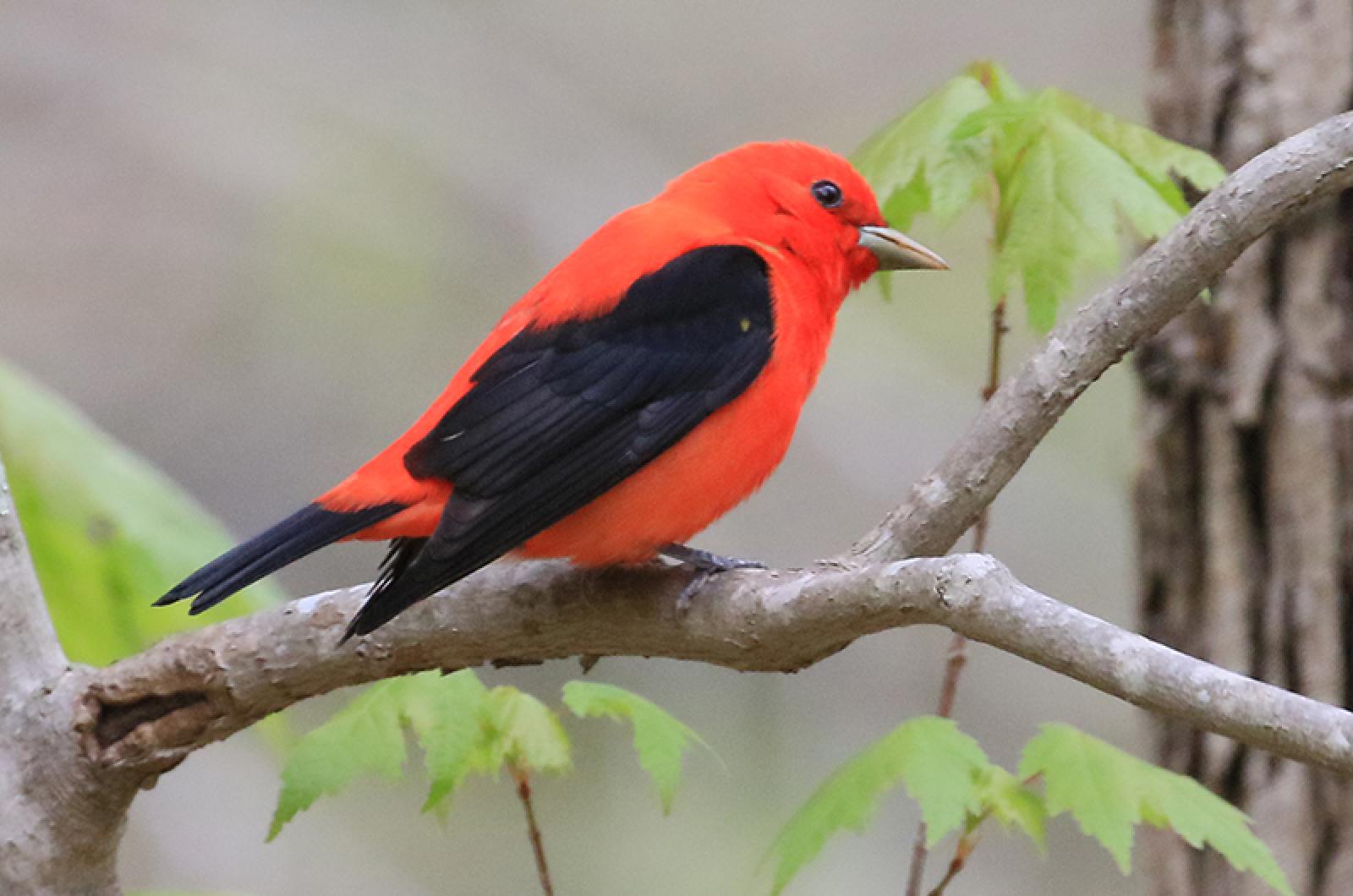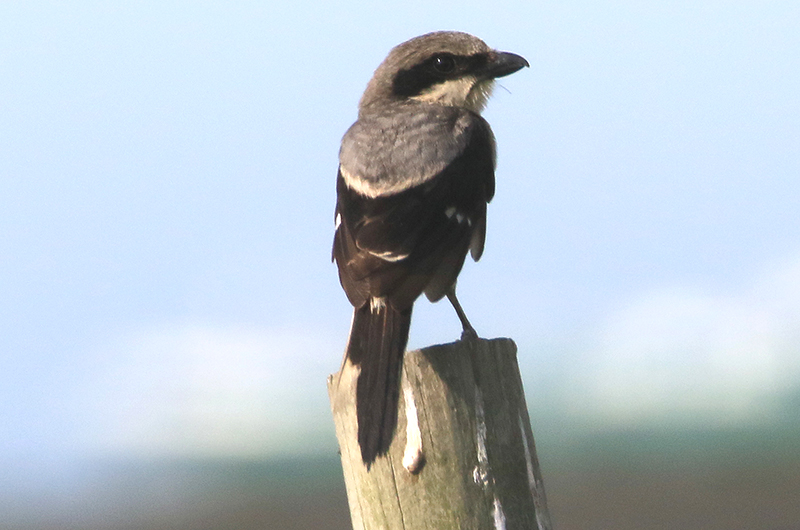This migration season seems to never end. More than good birding, it is a continuing procession of unexpected sightings. To top it off, these whacky sightings are from one individual, Ted Gilliland, who has been frequenting the Gay Head Cliffs, a hotspot that we normally feature in the late summer and the fall when birds are heading south.
The exceptional sightings started on May 21, when a swallow-tailed kite flew over his head near the cliffs before heading on northward toward Nashawena Island. The species is unmistakable with its falcon-like body, black and white coloration and a deeply forked tail. Their breeding range is mostly in Florida but they will wander northward. This is the first sighting in New England this spring. That same morning he also spotted purple martins, a pine siskin and a merlin.
Amazingly enough, Mr. Gilliland followed up this by spotting not one, but three Mississippi kites at Gay Head on May 22. He thought he saw one over the state forest, and when he got to the cliffs area three of them flew close overhead. Two were one-year-old birds that still retained juvenile flight feathers. There are already 14 sightings in New England this year.
As he watched, this small flock of kites circled upward to join a small kettle (another word for flock) of 28 broad-winged hawks. This latter species is uncommon on the Island, although recently we have found them most springs. While it is regularly sighted and breeds on Cape Cod, we have not been able to confirm it as a breeding species on the Island. Keep on the lookout for a small buteo with a black-and-white banded tail. Wendy Culbert spotted two of them circling over the state forest near the heath hen statue on May 23.
Mr. Gilliland’s week was not over, as he returned to the Gay Head Cliffs on May 24 and spotted a loggerhead shrike in the meadow near the circle. This mockingbirdish-looking bird has a short stout bill and a broad black facemask and was observed numerous times over one hour. This is a southern and western species that has declined greatly in the past 50 years. Susan Whiting and Barbara Pesch’s Vineyard Birds 2 shows that this species used to be found regularly but has not been recorded on the Island since 1982.
Quite the week for unusual birds! As the late Vern Laus liked to say, “Keep your eyes to the sky!”
Bird Sightings
All the other sightings of the week are of species that breed here. Sightings of scarlet tanagers in April and early May were near feeders and were likely transient individuals that may have been carried too far north by strong southerly winds. On May 26 I heard and then saw one male in the woods at the Phillip’s Preserve. They nest in the deep woods and forest interiors and have been seen in past years at locations like Fulling Mill Brook, Menemsha Hills, Wascosim’s Rock, Great Rock Bight and Cedar Tree Neck. These sights are mentioned because this species seems to have become rather scarce in recent years, and your help is needed to determine how many are here this year.
Evidence of nesting has come from several species. Sightings of birds carrying grasses, small twigs, and other materials they use to build their nests confirms that they are indeed nesting, as there is no other reason for them to carry these items. Kath May Waite observed a yellow warbler carrying nesting materials near the Mill Pond on May 24, and a great crested flycatcher was carrying nesting materials near her Oak Bluffs home on May 21. Elizabeth Wilson Deren also spotted a great crested flycatcher on May 26.
On May 27 I spotted a commotion in the part of the state forest that is south of the Edgartown-West Tisbury Road. It was a family of house finches and the fledged young, out of the nest and flying, were successfully begging for food by squawking and fluttering their wings rapidly.
Cynthia Bloomquist and Thaw Malin found a ruby-throated hummingbird sitting on her tiny nest on May 24.
On the waterbird front, near the Cape Poge Gut Debra Luce’s daughter observed a great black-backed gull with its approximately one-week-young chick on May 26. The first American oystercatcher chicks have hatched and piping plovers are well into their incubation. It is imperative that we leave them be and give them space on our beaches so their first nesting attempt will successfully fledge young by early July. Jeff Bernier reports that least terns are in full courtship mode now at Little Beach. The males entice the females by waving a small fish back-and-forth near her. It works for them and she eventually gets the fish.
Black skimmers are the favorite birds of many people. Jeff Bernier reports that there were 23 of them on Little Beach on May 22, while Allan Slater saw four of them feeding, which they do by dragging their lower beak through the water as they fly, in front of his boat in Edgartown outer harbor near Cape Poge on May 26.
Finally, Sharon Pearson spotted a flock of cedar waxwings on May 23, and I had a flock of at least six of them feeding in the oaks at the Phillips Preserve on May 26. There were also red-breasted nuthatches, pine warblers and yellow warblers.
The northward migration of birds is coming to an end but the breeding season is now full speed ahead! Please report your sightings to birds@mvgazette.com.
Robert Culbert schedules private guided birding tours and is an ecological consultant with Nature Watch LLC living in Vineyard Haven.








Comments
Comment policy »